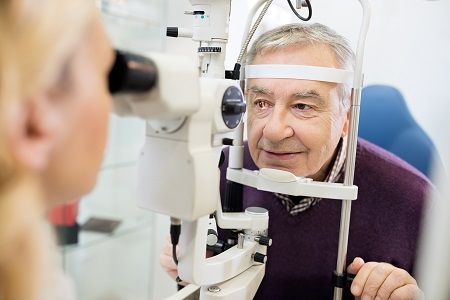Article
Link Found Between AMD and Myeloproliferative Neoplasms
Author(s):
Researchers analyzed 20 years of Danish healthcare registries to uncover a correlation.

Patients with myeloproliferative neoplasms (MPNs) are at a greater risk of developing age-related macular degeneration (AMD), according to a study that analyzed a link between the 2 conditions.
MPNs, or blood cancers where red blood cell, platelet, or white blood cell counts exceed in the bone marrow, is characterized in patients by blood flow issues and chronic immune modulation and inflammation.
The latter symptom is also suspected of being prevalent in the pathogenesis of AMD, the progressive eye condition that affects about 15 million Americans. A team of researchers, led by Marie Bak, MD, scoured 2 decades’ worth of Danish registers to analyze the conditions’ connection among patients.
Researchers conducted a nationwide population-based cohort study of all patients in Denmark to have received a diagnosis of essential thrombocythemia, polycythemia vera, myelofibrosis, or unclassifiable MPNs between January 1994 and December 2013.
The study featured 7,958 MPNs patients, with 77,445 controls matched for age and sex — the intent being to find 10 controls for every single patient. All patients without prior AMD were followed up from the date of diagnosis until the first AMD diagnosis, death, or emigration — if any occurred first prior to December 31, 2013.
Researchers calculated the rates and absolute risk of AMD in patients, and used the Cox proportional hazards regression models to calculate smoking and risk-time adjusted hazard ratios (HRs) between patients and controls.
Because antivascular endothelial growth factor treatment was introduced nationwide at hospitals after 2006, researchers calculated HRs of neovascular AMD after that date.
Of the MPNs patients, 4,279 (53.8%) were women and 3,679 (46.2%) were men, with an average patient diagnosis age of 66.4 years old.
The rate of AMD per 1,000 years at risk was 5.2 for patients with MPNs, and 4.3 for controls, according to the study. The 10-year risk of AMD for MPNs patients was recorded 2.4%, while the control group recorded a risk of 2.3%.
AMD risk increased in each of the MPNs subtype patient groups, and the overall MPNs group reported a greater risk of neovascular AMD than the control group.
Researchers concluded that MPNs patients are indeed at an increased risk of AMD, which supports the belief that the pathogenesis of AMD includes systemic inflammation.
The study, "Age-Related Macular Degeneration in Patients With Chronic Myeloproliferative Neoplasms," was published online in the journal JAMA Neurology on June 22.
Related Coverage
Researchers Say Eyedrops Could Replace Injections for Anti-VEGF Delivery





